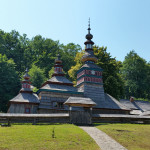
For centuries, in the eastern part of Poland and Slovakia, as well as the western part of Ukraine, the secular world has been quite unsettled. Russia, Germany/Prussia, Austro-Hungary, Tatars, Mongols and even Sweden – all fought, conquered or dominated these lands.
The border region where Poland, Slovakia and Ukraine meet was particularly fluid, not just politically, but in religion as well. Roman Catholicism came from the west along with Roman rule, and Protestant religions followed in the Reformation. Greek Catholic and Orthodox faiths spread here out of Constantinople, and moved then on to Russia – an eastern counterweight to the west.
By the 17th and 18th centuries, elaborate baroque churches flourished ebulliently in western cities, and huge Eastern Orthodox churches arose easterly. But the small farming villages of the borderlands preferred plain and simple places for worship that fit the hard agrarian lifestyle and temperament of the farmers.
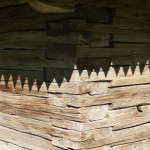
Whatever faith built these churches, in them one could pay homage to God and find solace in the promise of heaven. Their churches, therefore, started from the natural world, wood like the cross on which Jesus died: long-lasting red spruce or pine in large logs or massive planks, all fitted together by way of notched beams. Yet, because Jesus had been hammered to the cross, the builders used no nails. Oak wedges secured the logs and other natural materials (grass, clay, moss and even eggs) filled in the open spaces. The churches still standing date from the 16th to the 18th century, though likely their architectural tradition went back much earlier.
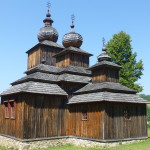
At this crossroads of faiths and empires, it’s astonishing that so many of the churches have survived, albeit with the help of much restoration. In Slovakia alone there are still 39 of them to see around Bardejov, including two removed to a skansen-type village nearby in Bardejov Kupele. And there are many more in Poland and Ukraine. Their persistence in an unstable world has rightly earned eight of them a World Heritage status – two Roman Catholic, three Greek Orthodox and three Protestant.
All are simple, humble, even rustic, but their design is rich in symbolic values. Despite frequent renovations over the centuries, these values still stand out firmly.
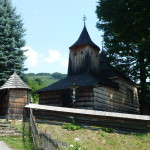
You approach these churches, somewhat theatrically, from the west through a wood gate, usually stooping to clear the low, open portico. Logs topped with flat, pencil-shaped wood shingles extend horizontally from the gate to form an encircling fence about a meter high. Just outside this enclosure, a cemetery extends across a field.
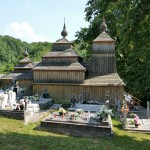
At the Eastern Orthodox churches, a tall onion-domed tower rises before you offering the entrance into the church, a cross-hatched wood plank door. It’s not until you circle the church or enter that you find there is more to it. Behind the tower and connected to it by a peaked roof covered in shingles like the fence, a second shorter dome appears. Then finally at the eastern end of the church an even shorter third dome rises. As befits the plain, pragmatic lifestyle of the farmers, there is no exterior decoration except for the domes and the patterned shingles.
The three domes reflect the Christian trinity of Father, Son and Holy Spirit. Though their progression from higher to lower seems reversed to us, to the farmers it also reflected movement from the known, visible world to the partly glimpsed invisible one.
The inside of the church is divided into three parts – narthex, nave, sanctuary – corresponding to the symbolic domes above. Praying villagers could experience that same symbolic passage toward heaven – a sacred path that could seem straightforward, though not always so easy to accomplish.
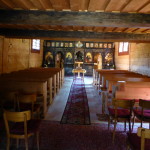
Entering the tower door to find a wide hall, the narthex, you are still within the earthly realm. Surprisingly, though, you nearly have to duck under a low ceiling to continue. In this section, women traditionally stood for prayers, presumably less capable of proceeding further. Above them, on a landing reachable by a rough stair-step ladder, the older women would sit.
The men (and nowadays the women too) continued to the nave, the middle section beneath the second dome, to sit in the equally rough-hewn pews. The visual surprise is that a beamed, trapezoidal roof soars overhead here, quite dramatically after the low entry hall. It’s the tallest part of the church’s interior and, for the penitent, the realm of heaven.
There is little adornment in the Eastern Orthodox churches, as the walls are plain rough-hewn red pine. Occasionally an icon or picture hangs, though perhaps not in the old days. There is one important exception: the wall, or rather gateway, at the front of the nave.
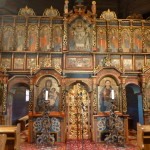
Here, at the iconostasis, color and vivid detail visually explode before you. The iconostasis is a three-meter high wooden screen that separates the vaulted mid-section from the compact and holiest section of the church at its eastern end. It is the place of icons, dozens of painted saints admonish you to piety and devotion. There are several tiers of these icons, each in stunning colors on fields of gold. In the past, they retained the primitive looking, pre-Renaissance style held to by the Orthodox Church. Aside from the simple, framed paintings of the saints, you could find tales from the gospels, or graphic novel episodes of the life of the saint to whom the church was dedicated. Florid decoration ran between the icons, with more recent iconostases enhanced by gold-painted designs.
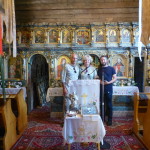
It was a thrill for us to find even a few splendid, old iconostases at some churches like Bodruzal, one of the oldest extant from 1658. Mostly, the oldest of these icon walls have been either lost, replaced with more modern versions, or removed to museums (as were surviving Pompeiian treasures to the Naples Museum). That’s why there is a terrific collection of icons (and models of wooden churches) at Bardejov, a Slovakian town near the Polish border – hosted by the east Slovakian beer, Saris.
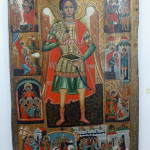
Here you can see many, many examples of the idealized, flattened figures of the Byzantine style of painting icons, and how that style evolved. Western art eventually altered the East’s more primitive, folk-style simplicity with rounded figures, perspectival fidelity and baroque touches. The museum even displays entire iconostases from the past.
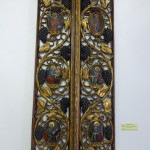
Within the churches, three doors in the iconostasis opened into their third and holiest section. The left and right doors were painted wood. The center door was typically carved like a trellis rich with grapevines. Amid the grapes, small figures of key saints peek out. Atop this door, inevitably, features a rendering of the Last Supper.
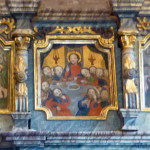
Past these doors is the sanctuary, the realm of “the Higher Principles,” the essence or revelation of what comes from heaven. This space under the lowest dome is physically and spiritually the most difficult to reach, a place few can go on earth. Typically, in a service, the priest passes back and forth thru the center door. At times he beseeches God’s presence and connects to these higher spirits at the altar within; at times he reconnects to the devout in the pews. Appropriately, the room is much smaller than the other two. It’s nearly filled up by the altar, which is adorned with icons, carvings, prayer books, and tapestries. During prayers, censers there add the fragrance of incense or spirit to the chants of the villagers.
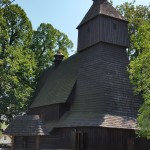
As befit the fluid religious borders over the years, Roman Catholic churches adapted the homespun Eastern style for their own use (and we presumed, though did not see, that the Protestant churches in the area did the same). These churches were capped with just two peaks, not the Trinitarian trio, and typically connected the roofs of the sections into a building more unified from the outside.
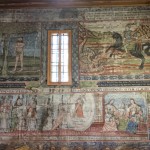
Somewhat like their more magnificent cousins in large cities, they had no use for the iconostasis. Instead, they would paint the plank walls with liturgical lessons or images of saints like Saint George or the perils of sin. Other framed paintings adorned the walls.
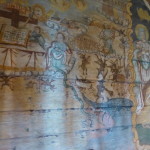
Some of the Greek Catholic churches, like the one at Bodruzal, even borrowed the idea with several wall paintings of its own , including an imposing Last Judgment.
It’s not hard to find these churches if you’re armed with the list of the towns where they still sit and are prepared to meander through the countryside. Once you’re in a town, you get the hang of how to locate them, usually toward the center and up on hills. In the larger towns, however, with little signage, we often searched around quite a bit more.
Getting inside most of them can be particularly tough, as you usually have to phone up the person with the key – or as in one case find House 19 in the town. Many of these key caretakers were unreachable when we tried them or seemed to have no idea what an English speaker was calling about. Fortunately, the most notable of the churches often have an attendant on site to host visitors, for a modest fee. The attendants we met delighted in showing off the highlights of the church – even if we barely understood what they’re saying. At some churches we were fortunate to arrive during services to see not just the church, but hear the rhythmic chants of the villagers and priest within that space.
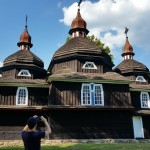
We saw fourteen of them in two days, including the inside of about half of them. Though most had the same basic look, we came to notice and savor variants in the design, observing the differences in the domes, or the linkages between them. Major variations were especially interesting like the surprisingly wide mid-section of Dobroslava. Or the watchtower entrance at Krajne Cierno. Or the hulking bulk and swept-back, integral rooftop of the Roman Catholic church at Sekowa in Poland, dating from 1520, with its overflow seating in an three hundred year old extension, or exo-narthex. Or the slate grey, white-trimmed Nizny Komarnik, whose center dome was its tallest because it had no tower at all, but rather a porticoed entrance. Or the Roman Catholic one at Hervartov with its many dramatic wall paintings. Or the unusually ornate, multi-faceted domes of Hunkovce and the Mikulasova church moved to Bardejov Kupele. Or the stunning iconostases still present in some churches, like the Mikulasova, Ladomirova and Bodruzal.
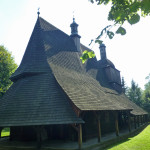
The churches have seen much restoration over the centuries. Materials may have changed and even nails have been used to hold things in place. No one seems much bothered about this though, demonstrating a contemporary pragmatism. Many churches are just for show now, in situ museums of the past.
Yet, after more than 400 years of devotion and despite 45 years of official rejection of religious practice, today there seems still to be a need among the people to come and pray. On Friday evenings and Sunday mornings, we found several of these if not filled, then at least half-filled, with the dwindled numbers of local townspeople still hopeful to pass from the open door of the tower on to heaven and inner peace.
(Also, for more pictures from Czech Republic & Slovakia, CLICK HERE to view the slideshow at the end of the Czech Republic & Slovakia itinerary page.)


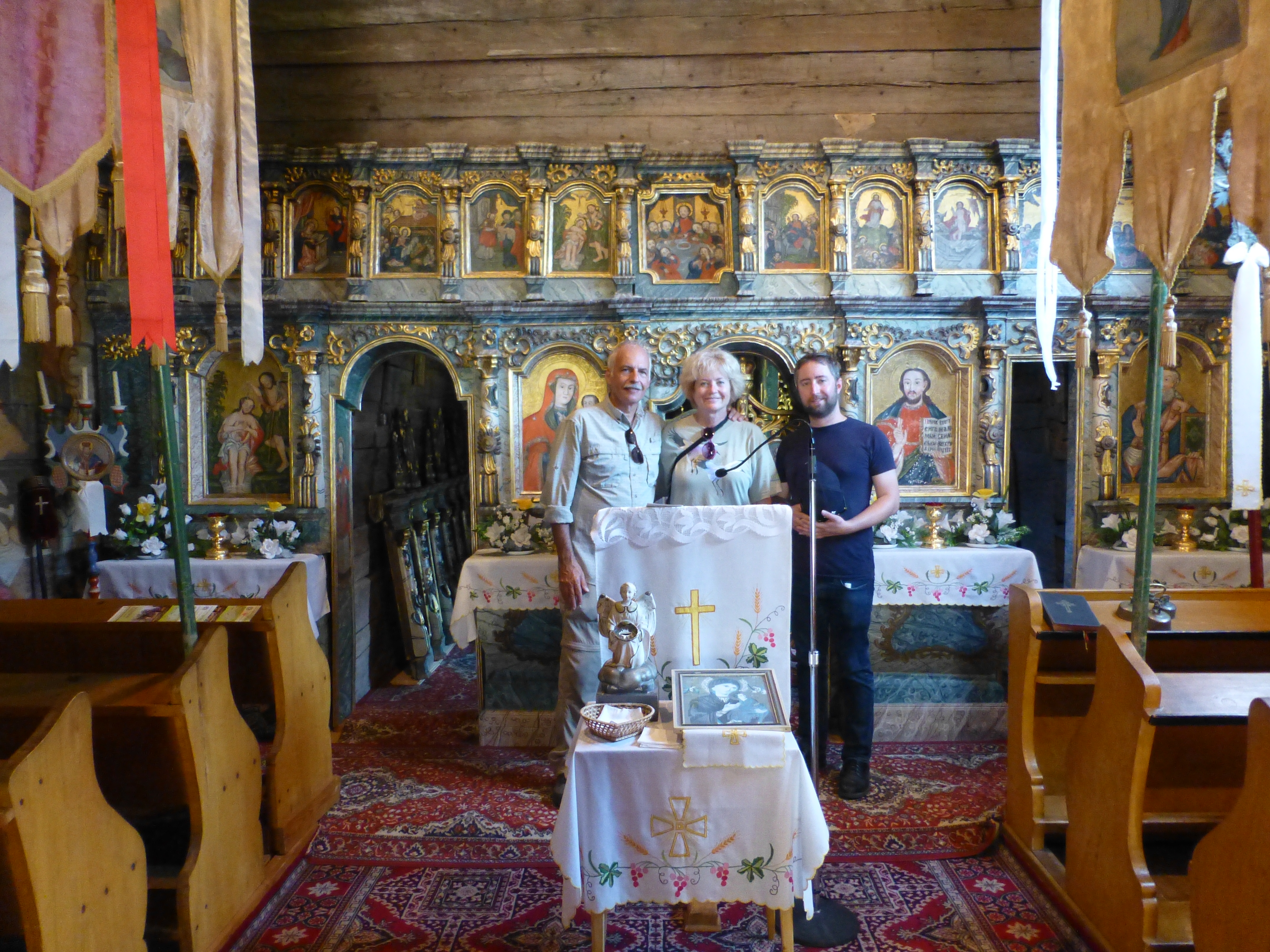
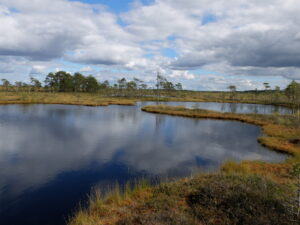
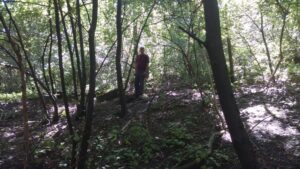
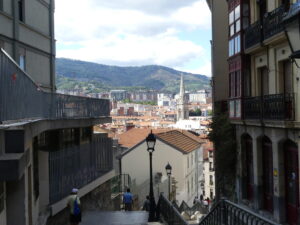
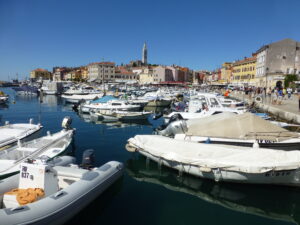
Great write up! Better pictures than I have!
it is like in Maramures from Romania
I looked them up, and yes they look wonderful. We must go there sometime!